Day 6: Friday, 1/12/2018
by Andrew Hollyday (18′) and Joel Wilner (18′)
It may be possible that we were the first-ever visitors to Parque Nacional Manuel Antonio who attempted to ignore the park’s world-famous biodiversity. Instead, our focus was on the enigmatic rocks flanking one of the park’s heavenly beaches. We inched along the crashing Pacific surf, inspecting and interpreting the lithology and structural geology of the coastal outcrops. The rocks revealed curious remnants of the past: cemented layers of angular pebbles giving way to fine-grained sands, extensional fault structures, bulbous basalts. With trusty Brunton compasses and field notebooks in hand, we measured layer orientations and took meticulous notes on each of the many distinct layers.
In the afternoon, the class worked in groups of four to distill our field notes into stratigraphic columns, descriptions, and two-dimensional schematic sketches of the rocks we had mapped along the coast. Referencing the rocks we had studied in Vermont and through close examination of stratigraphic and deformational logic, we presented and challenged various hypotheses about how these Costa Rican coastal rocks were first deposited and later deformed. Ultimately, we interpreted these meta-sedimentary rocks to have been originally deposited in submarine landslides, which were later tectonically upwarped. A complex of normal faults in the bedrock indicated these rocks underwent later extensional strain—much like the Basin in Range Western United States. These fractures and faults may have allowed magma to ascend through the oceanic crust and erupt pillow basalts (lavas that crystallize underwater in pillow-shaped forms) that we observed on the opposite side of the beach.
We ended the day with a discussion on methods of geologic dating and presentations from Matt, Bryce, and Eli on the geophysics of tectonic plate subduction, earthquake sensing, and an “incoherent stratigraphy” in the Nicoya Peninsula. After an intense, challenging, and intellectually stimulating day of geology in Manuel Antonio (and a delicious ‘típico’ dinner cooked by Pete and Kristina), we head north to the interior.
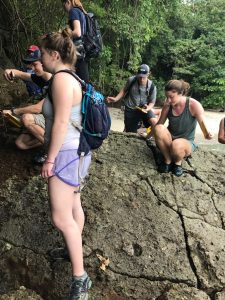
Making observations on Manuel Antonio Beach.
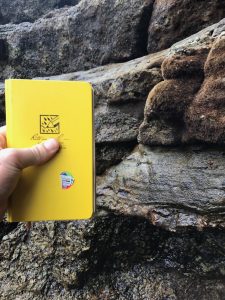
The rocks exposed at the Manuel Antonio beach outcrops.
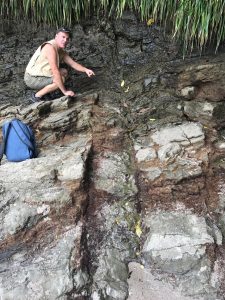
Pete highlighting a small fault exposed in the Manuel Antonio beach outcrop.
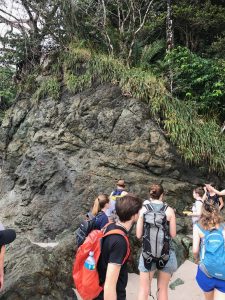
Observations at the ‘raccoon rocks,’ an outcrop named for the pesky little critter who tried to steal Pete’s backpack.
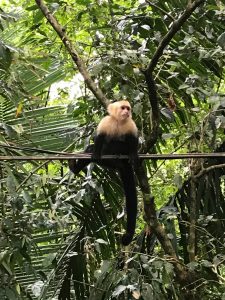
Despite our best efforts, we couldn’t ignore the amazing wildlife completely! Here, a capuchin monkey poses for the camera.
